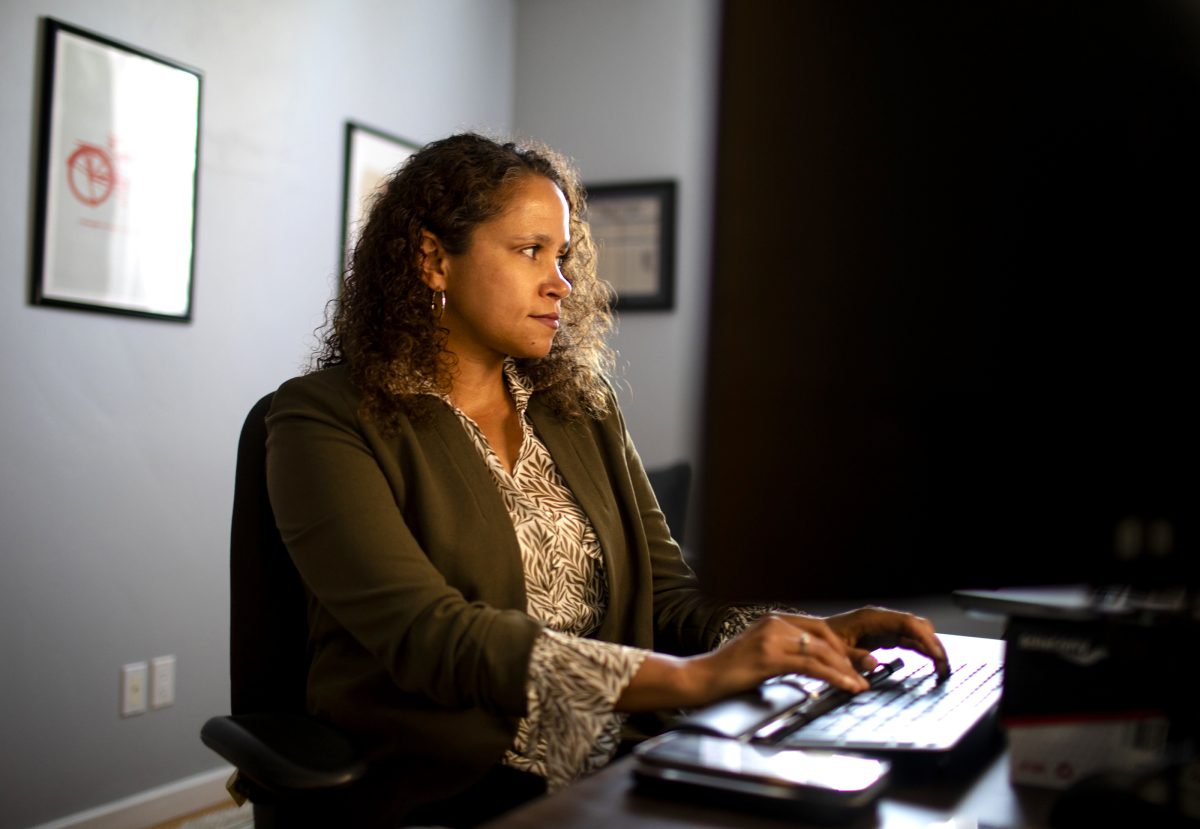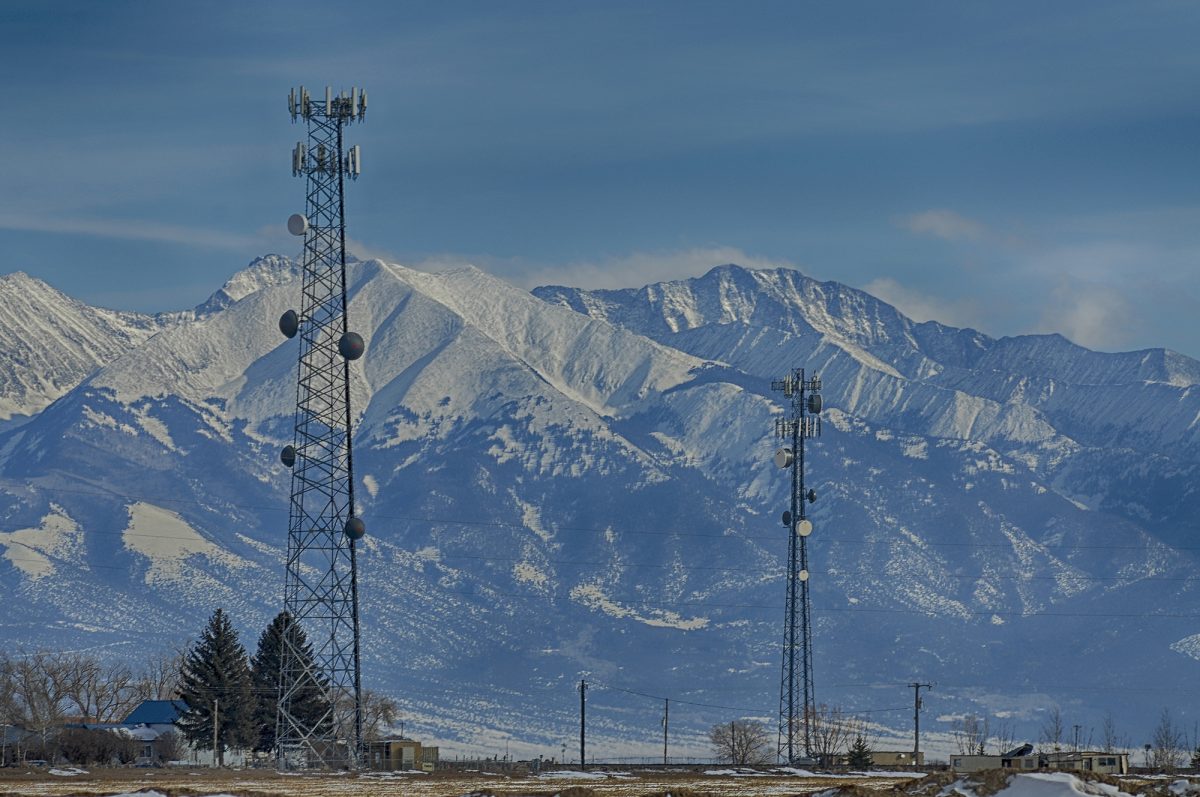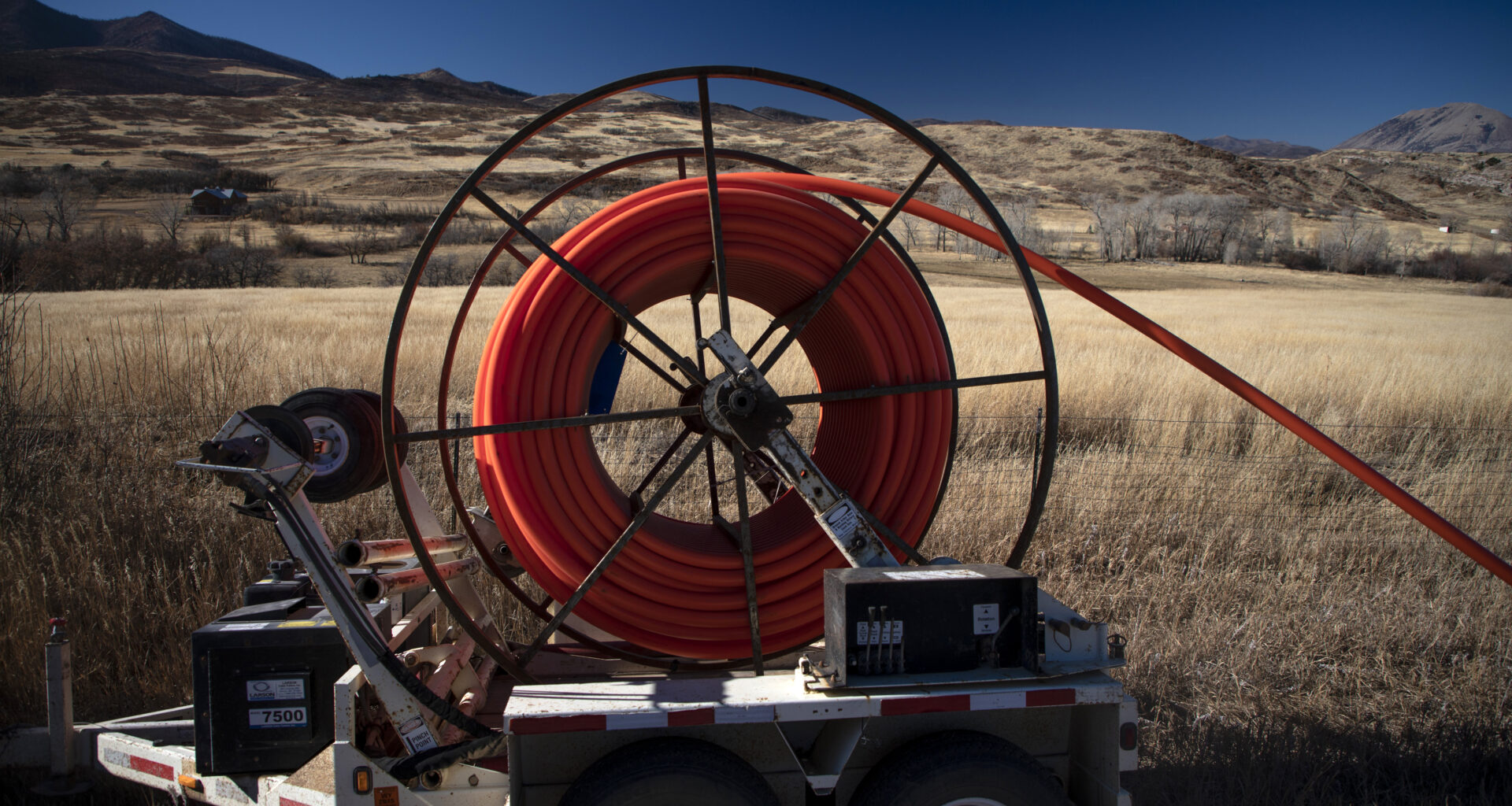Rule changes and an aggressive new timeline on how Colorado’s can use its $826.5 million in federal broadband dollars had local internet providers scrambling this month. All had to reapply for grants to subsidize new internet infrastructure for underserved rural communities — including those who had already received preliminary approvals.
Applications closed Monday. But the two-week sprint — compared to six weeks the first time — left many overwhelmed. And a rule change to keep the tech neutral essentially prohibited a preference for fiber over wireless, satellite or even DSL. Some companies dropped out.
“It was a rough spell,” said Leslie Mastroianni, executive director of the Southern Colorado Economic Development District in an email. They cut their original 10 applications by half for the southeastern part of the state. “We are fortunate that the ISP (SECOM) has the capability to incorporate new priorities into our project design. There are other ISPs that take great pride in their fiber capabilities and were unable to make those adjustments.”
To back up a bit, Colorado was far along in rolling out the Broadband Equity, Access and Deployment Program, known as BEAD, which was allotted $42.5 billion by Congress as part of the 2021 infrastructure bill. At the time, lawmakers had realized that not all American households had enough bandwidth to work or go to school online during the pandemic.
BEAD would help the state, and the rest of the country, finally get all those underserved households overlooked for years to modern-day bandwidth. Projects needed to meet minimum speeds of 100 mbps down and 20 mbps up and be scalable so that by the time service is turned on, it’s not already too slow.
The Colorado Broadband Office, which managed the project, wanted the best tech it could afford. They moved fast to get construction started. Shovels would hit the ground by next summer, if not sooner.
Then on June 6, the National Telecommunications and Information Administration changed the rules for the Trump administration. The so-called “Benefit of the Bargain” round prioritizes not the tech but the lowest cost, at least for the government, to save taxpayer money.
 Executive Director of the Colorado Broadband Office, Brandy Reitter, works from her home office in Eagle, Nov. 1, 2022. (Hugh Carey, The Colorado Sun)
Executive Director of the Colorado Broadband Office, Brandy Reitter, works from her home office in Eagle, Nov. 1, 2022. (Hugh Carey, The Colorado Sun)
“Basically, we had to rescind all of our work, so, a full start over. It modified the grant program and gave us 90 days to start over (and) execute a new grant application,” said a weary-looking Brandy Reitter, executive director of Colorado Broadband Office, which oversees the state’s BEAD program. “The only thing that didn’t change was the funding.”
She’s concerned about the next stage, which includes vetting applicants and making sure the 130,000 locations vying for dollars really are unserved or underserved. Last time, it was a nine-month process. Now, she has 45 days.
“This is not CBO’s program. I don’t want people to think that this is us. The last program was us because we worked with stakeholders for three years to do this and it was a program designed by Colorado, implemented by Colorado,” she said. “…We would never, ever run a grant program in 90 days under normal circumstances, especially for a billion dollars.”
More wireless and satellite, less fiber
The mix of applicants in the new round has changed. Proposals to build fiber internet dropped off to 40% of the applicants, from 64% in the prior round. Wireless options, like fixed wireless, are now the majority.
And 29 new companies entered a bid, including eight applications from Starlink, the satellite internet service started by billionaire Elon Musk.
Details of the proposals are not yet available but a public comment period is planned for the end of August.
Satellite companies requested $363 million, while fixed-wireless companies asked for $60 million and fiber internet companies were at $464 million, according to CBO data.
BEAD is now “satellite’s to lose”
Starlink reinvented consumer satellite internet service with faster speeds than older satellite technology. And the company is widely praised for speed and quality, especially in rural areas where service is spotty and poor, if there’s any at all. In 2020, Starlink called its public trial the “Better Than Nothing Beta.”
In a recent report, Ookla, which measures and rates internet performance with Speedtest, said Starlink is finally seeing enough improvement that it could be a contender for BEAD dollars.
 In this time exposure taken from Westgate Cocoa Beach Pier in Cocoa Beach, Fla., a SpaceX Falcon 9 rocket lifts off from Pad 40 at Cape Canaveral Air Force Station, Fla., Tuesday, Nov. 24, 2020. The rocket is carrying the 16th batch of Starlink communications satellites. (Malcolm Denemark/Florida Today via AP)
In this time exposure taken from Westgate Cocoa Beach Pier in Cocoa Beach, Fla., a SpaceX Falcon 9 rocket lifts off from Pad 40 at Cape Canaveral Air Force Station, Fla., Tuesday, Nov. 24, 2020. The rocket is carrying the 16th batch of Starlink communications satellites. (Malcolm Denemark/Florida Today via AP)
However, in the same report, Ookla noted that only 17.4% of Starlink Speedtest users in the U.S. had broadband speeds that met the federal government’s minimum requirement. By the first quarter this year, Speedtest users were getting median download speeds of 105 mbps, which is faster than mobile wireless service, according to Ookla data.
Fiber still dominates with gigabit speeds and dedicated access so bandwidth doesn’t slow when neighbors are using it.
And fiber is still a better technology for the future, said Jordan Wehe, co-CEO at Jade Communications in Alamosa.
Jade resubmitted its applications “with very few changes,” Wehe said. “Our focus is on providing strong, resilient service and the best way to do this in remote Colorado is buried fiber optics.”
But Brian Worthen, CEO of Visionary Broadband on the Western Slope, said satellite-based internet will now be his top competitor.
“We saw the NTIA guidance,” Worthen said. “And we realized that most of the BEAD program is now satellite’s to lose. They are more ubiquitous. They don’t have to have the capital infrastructure as we do if you’re doing something on the ground, especially with fiber.”
Later this year, Colorado consumers could have another low-Earth-orbit internet option. Amazon’s Project Kuiper service is slated to start in late 2025 and offer download speeds of 400 mbps. Pricing has not been announced.
Amazon officials could only confirm what has been made public. The company sent its third batch of Project Kuiper satellites to space last week and is building a constellation of 3,200 satellites for a reportedly multibillion dollar price tag.
Officials from Starlink did not respond to requests for comment about their plans for Colorado. According to Starlink’s availability map, its service is available in Colorado.
But a spokesman for the Satellite Industry Association pointed to an op-ed from its president, Tom Stroup. The trade association supported BEAD’s neutral technology because otherwise, satellite was de-prioritized. Stroup acknowledged what he called, “an undisputed truth: fiber delivers exceptional performance,” but the major disadvantages are that fiber deployment is cost prohibitive and takes a long time to build.
Meanwhile, he said, “satellite connectivity provides virtually 100% coverage across the United States right now, not years from now. Multiple companies currently offer this service, creating healthy competition that drives innovation and consumer choice.”
According to the state’s broadband office, both satellite companies applied for funds in the new round and asked for $363 million, or nearly half of Colorado’s BEAD allocation.
Colorado was already technology neutral
While the Colorado Broadband Office did find Amazon’s Project Kuiper application a challenge because the service wasn’t available yet, Reitter said they planned to use Kuiper to fill in coverage gaps.
CBO’s original plan included a lot of wireless, too, Reitter said. They wanted what was the best for the specific community, which could mean a mix of fiber, wireless and even satellite.
And cost was already a concern, well before Trump’s new commerce secretary complained that some BEAD plans were too costly, like one that cost $100,000 to run fiber to a single house appraised at $100,000.
“We were very sensitive to the perceptions in the program and set a high-cost threshold,” Reitter said. “Because at the end of the day, you have to be able to justify your decision-making. And $100,000 per location in my mind isn’t justifiable for fiber. It’s better for maybe another technology.”
 Cell phone and rural broadband towers in Alamosa County, with the Sangre de Cristos in distance on Jan. 22, 2021. (John McEvoy Special to The Colorado Sun)
Cell phone and rural broadband towers in Alamosa County, with the Sangre de Cristos in distance on Jan. 22, 2021. (John McEvoy Special to The Colorado Sun)
The do-over did cost some applicants extra money.
Shak Powers, the regional projects manager in the Region 9 Economic Development District in Durango, helped a handful of local internet services with their original BEAD requests. And that was not cheap or easy for the companies.
“These internet service providers spent a tremendous amount of money putting these applications together,” Powers said. “They’re paying grant writers. They’re paying engineers to do the preliminary designs, and especially with the initial round being due in winter, going out and looking at all of these (sites) where we live is very time consuming and very costly. Some of them probably spent tens of thousands of dollars getting their initial applications ready.”
Provisional winners under Colorado’s original plan were a mix of fiber and wireless, like a plan by FTI WIFI to run fiber and fixed wireless up the Dolores River and the north side of Cortez and Montezuma County, said Bill Blackford, general manager of FTI WIFI, the internet arm of Farmers Telephone Company that serves the Pleasant View and Cortez area.
“We took a hybrid approach because we recognize that the money involved, well, you know, we’re not a large-scale national provider,” Blackford said. “We took the approach that this is citizens’ money. How could we deliver a really good service to these folks but not do it in a way that is economically negative to taxpayer dollars?”
But that didn’t make reapplying easier, he said. FTI spent another $10,000 to write up a new grant application. They also looked for ways to lower the cost from the initial $10 million. Some unserved locations dropped out because they were now covered by other wireless services. He also swapped out some fiber for wireless, which cut $3 million off the project.
“We did take out some of the fiber sections that we felt like we could try to function around them and try to cheapen up the project because ultimately, the way the new bargain round works is the cheaper projects are more likely to get funded even if they don’t create long-term infrastructure, which is kind of the point of the (BEAD) program,” Blackford said.
He hopes FTI will win back the proposals originally awarded by CBO since some investment has already been made. But he drew the line at including unlicensed technology that may meet minimum speeds today but can diminish as more users hop on.
“If we lose it, we lose it,” he said. “But I don’t think that’s the right thing to do for those consumers because they’re going to be left with a substandard product. It’s like, OK, we spent billions and yet here we’re still left with $120 service that is substandard for modern use.”
The Colorado Broadband Office must vet applicants and make sure proposals don’t overlap. A final proposal is due by Sept. 4 to NTIA, which has 90 days to review it. A public comment period will likely occur at the end of August.
“We really don’t expect shovels in the ground until, I don’t know, maybe if we’re lucky, late next year,” Reitter said. “And if we can’t preserve as much fiber as possible, it (will be) truly the benefit of the bargain. (Underserved users) will likely see the same technology that they have today.”
Type of Story: News
Based on facts, either observed and verified directly by the reporter, or reported and verified from knowledgeable sources.
